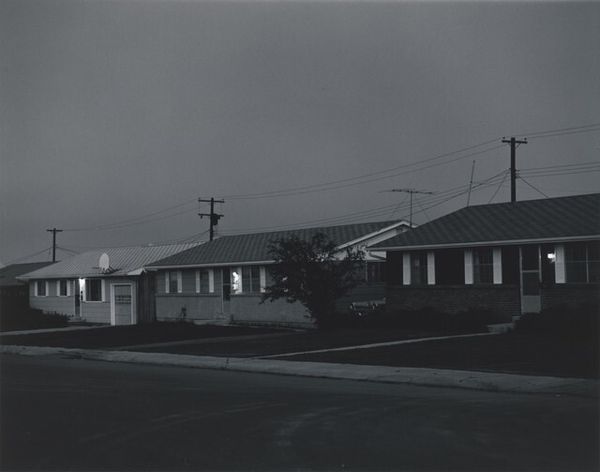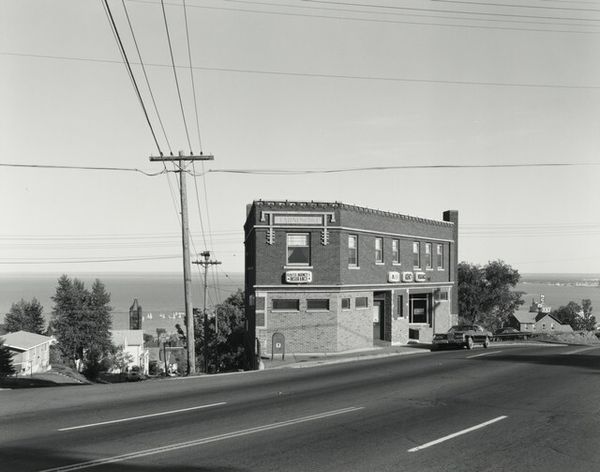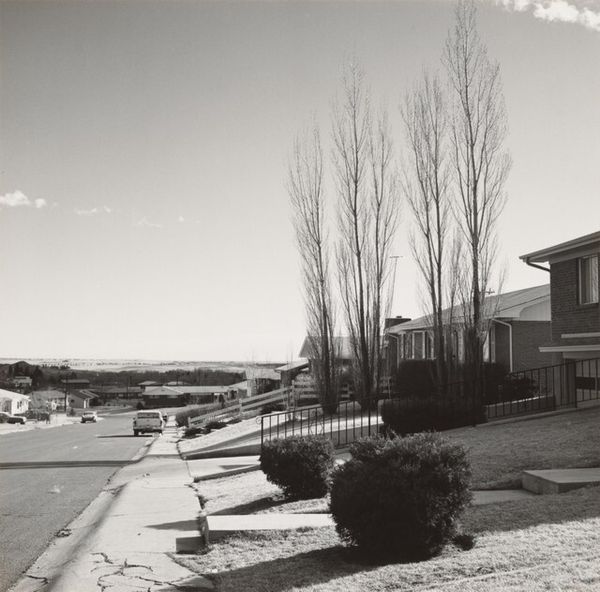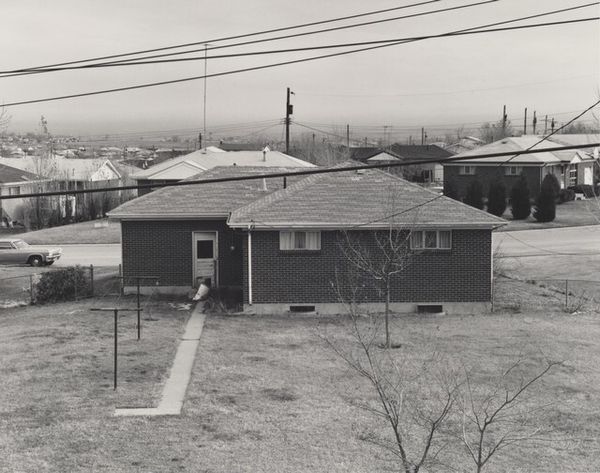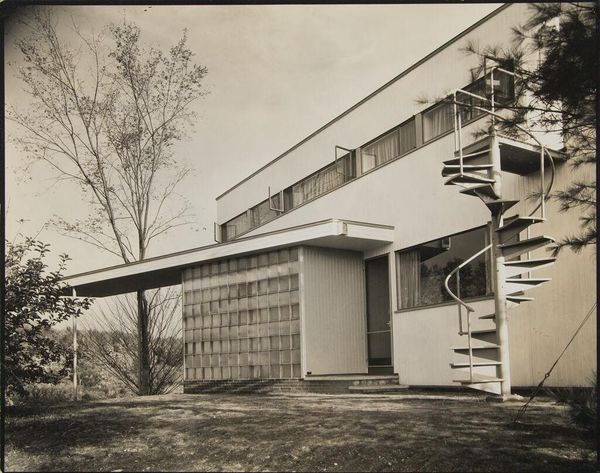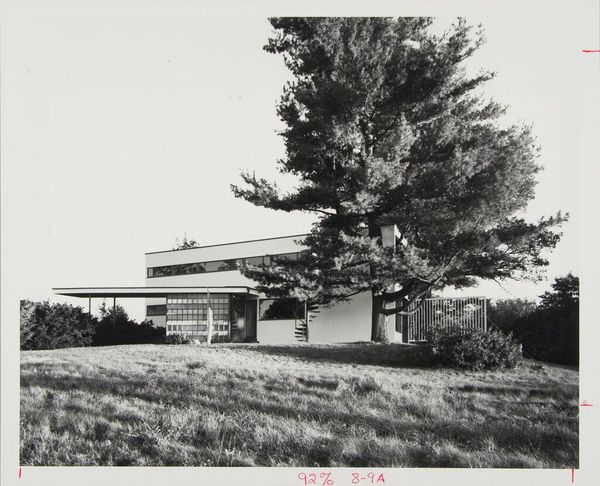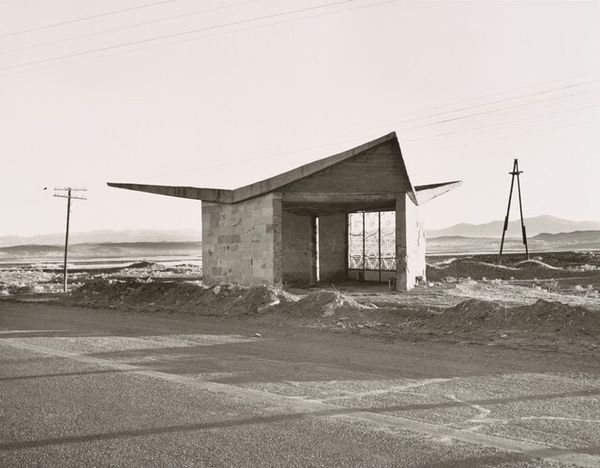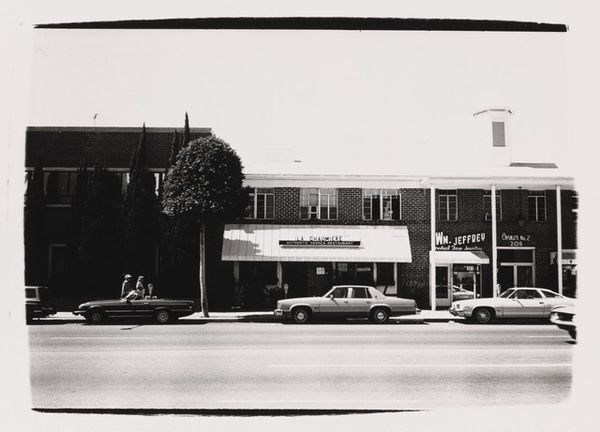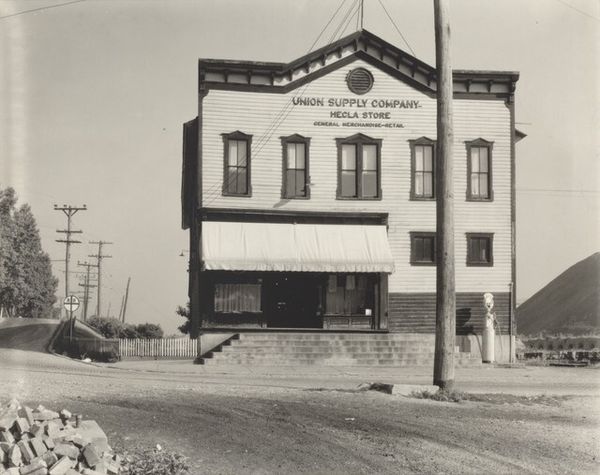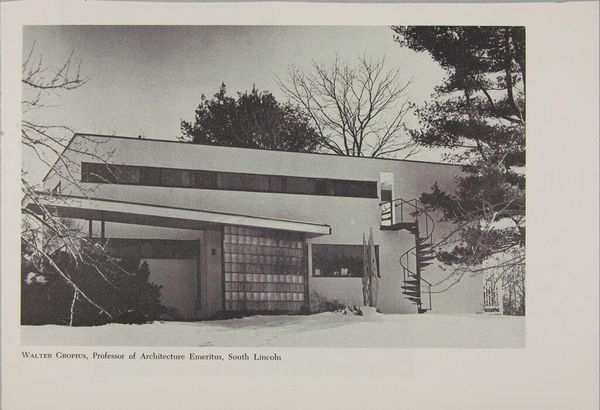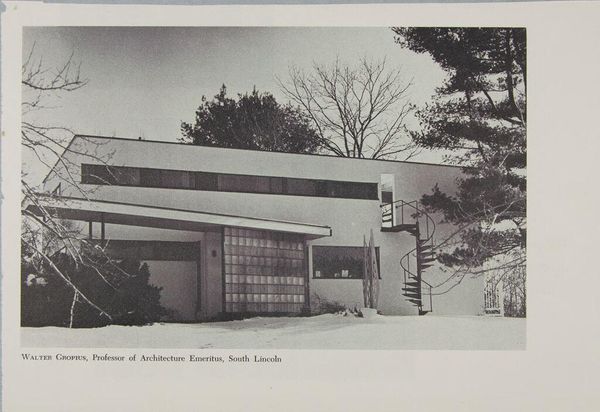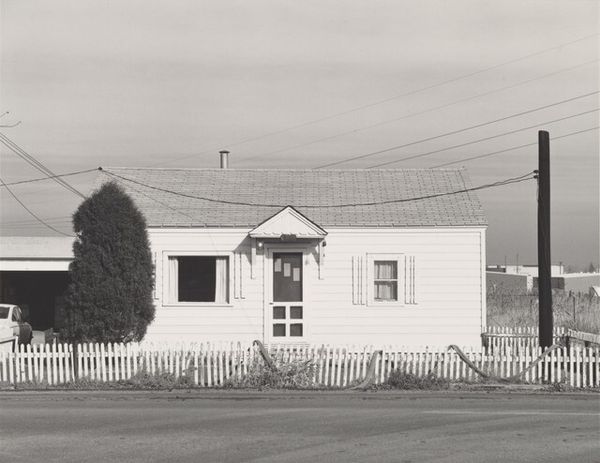
#
black and white photography
#
black and white format
#
warm monochrome
#
automotive design photography
#
black and white theme
#
black and white
#
monochrome photography
#
outdoor activity
#
monochrome
#
car mechanical design
Dimensions: image: 15.24 × 15.24 cm (6 × 6 in.) sheet: 35.4 × 27.7 cm (13 15/16 × 10 7/8 in.)
Copyright: National Gallery of Art: CC0 1.0
Curator: A flat affect hits you like a sun-baked brick, doesn’t it? Editor: Indeed. What we’re looking at is Robert Adams' "Jefferson County, Colorado," likely captured between 1970 and 1981. A seemingly simple black and white photograph. Curator: Seemingly. It's that perfect blandness that gets to me. That utter lack of...fuss. Is it apathy or an accusation? A comment on suburbia eating itself? Editor: Well, Adams often explored the impact of urban sprawl on the American West. He documented these rapidly changing landscapes. The new, often monotonous architecture, its imposition onto a natural landscape. Curator: And the almost oppressive ordinariness of it all. The house with the basketball hoop awkwardly attached, the perfect lawn stretching towards oblivion, even the telephone pole with its strangely beautiful geometry feel lonely, exposed somehow. Like we are observing zoo animals in unnatural habitat. Editor: I see it as part of the New Topographics movement. These photographers, Adams included, challenged traditional landscape photography. Moving away from the idealized scenes to depict more banal and, at times, unsettling realities of human interaction with the land. It's not about capturing pretty vistas, it’s a critique. Curator: I see ghosts in this landscape; dreams deferred and watered down. The stark monochrome only adds to the sense of a present haunted by the past, perhaps even the future. Like a prophecy of placelessness. Editor: That somber tonality serves to defamiliarize the familiar, doesn't it? These are houses, a setting of comfort. But the lack of vibrancy or warmth challenges that notion. By rendering a known visual trope into this bleak form, Adams is implicating viewers as complacent stakeholders in the proliferation of such scenes. Curator: Absolutely, there’s something undeniably unsettling in this calculated "nothingness," isn’t there? Editor: Perhaps by capturing this calculated "nothingness," Adams was pointing to the cost of progress. And it makes us confront it head on.
Comments
No comments
Be the first to comment and join the conversation on the ultimate creative platform.
